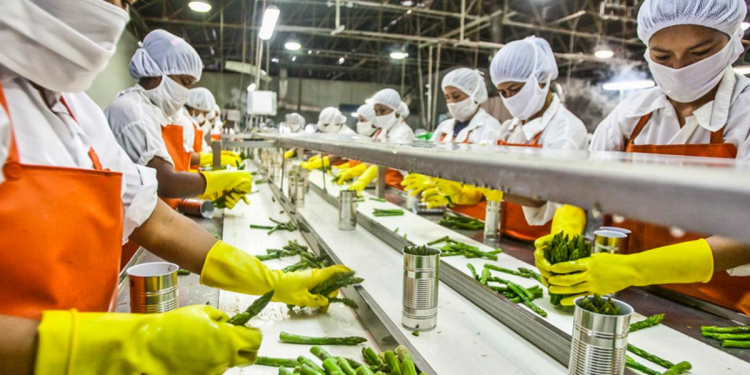We delve into the intricate techniques that transform raw ingredients into the diverse array of foods we enjoy daily. From traditional methods passed down through generations to cutting-edge technologies revolutionizing the industry, we unravel the secrets behind food processing. Beyond the techniques, we uncover the myriad benefits, including enhanced shelf life, nutritional fortification, and increased accessibility. Join us on a journey through the heart of the culinary world, where we not only unravel the methods behind the magic but also shed light on how these processes contribute to our modern food landscape, enriching our lives in more ways than one.
Safely cooling foods is a critical aspect of food processing, ensuring that prepared meals maintain their freshness and taste while meeting stringent safety standards. Proper cooling techniques prevent bacterial growth and preserve food quality, underscoring the importance of precise temperature control in the intricate web of food processing methods.
1. Traditional vs. Modern Methods: A Comparative Analysis
This section delves into the age-old techniques that have sustained cultures for generations and contrasts them with the cutting-edge methodologies defining the modern food processing industry. Discover the wisdom encapsulated in traditional practices, emphasizing natural preservation and authenticity, while also exploring the efficiency and precision brought by modern innovations. By understanding this interplay between heritage and innovation, we unravel the intricate tapestry of food processing, appreciating the rich history that informs contemporary methods.
2. Preservation Techniques: Extending Shelf Life and Ensuring Safety
Exploring the art and science of food preservation, this segment delves into methods designed to prolong shelf life and maintain the safety of consumables. From canning and dehydration to refrigeration and irradiation, learn how these techniques inhibit spoilage and bacterial growth. Understanding the delicate balance between taste, texture, and safety is essential in appreciating the meticulous process behind preserving various food items, ensuring that they reach consumers in optimal condition, while simultaneously reducing food wastage.
3. Nutritional Enhancement: Fortifying Foods for Health and Wellness
Food processing plays a pivotal role in enhancing the nutritional value of everyday staples. This section uncovers the methods employed to fortify foods, such as enriching cereals with essential vitamins and minerals or incorporating functional ingredients for health benefits. Delve into the science of nutrition, exploring how processing techniques are harnessed to address specific dietary deficiencies, promote overall wellness, and cater to diverse nutritional needs, making fortified foods an integral part of balanced diets worldwide.
4. Innovation in Food Processing: Technological Advancements Shaping the Industry
Embark on a journey through the rapidly evolving landscape of food processing technology. From robotics and automation to nanotechnology and artificial intelligence, witness the transformative power of innovation in shaping the future of the food industry. This section highlights groundbreaking advancements, exploring how these technologies optimize production, enhance food safety, and revolutionize supply chains. By embracing these innovations, the industry continues to push boundaries, ensuring efficiency, sustainability, and the delivery of high-quality products to an ever-discerning consumer base.
5. Societal Impact: Accessibility, Convenience, and the Changing Food Landscape
The influence of food processing on society is extensive, shaping global food access and consumption patterns. This impact is particularly evident in the convenience sector, where processed foods have seamlessly integrated into modern lifestyles. Examining their role reveals how these products enhance accessibility, accommodating a wide range of tastes and preferences. Furthermore, exploring their societal implications sheds light on cultural shifts in culinary traditions and their evolving role in addressing worldwide food security challenges. Understanding these intricate dynamics provides valuable insights into how food processing shapes economies and societies globally. From a health perspective, boiled seafood emerges as a nutritious option, preserving essential nutrients while catering to discerning consumers seeking both flavor and wellness.














